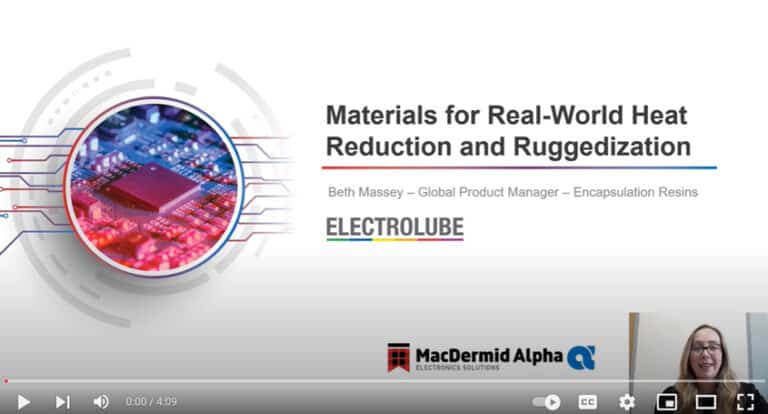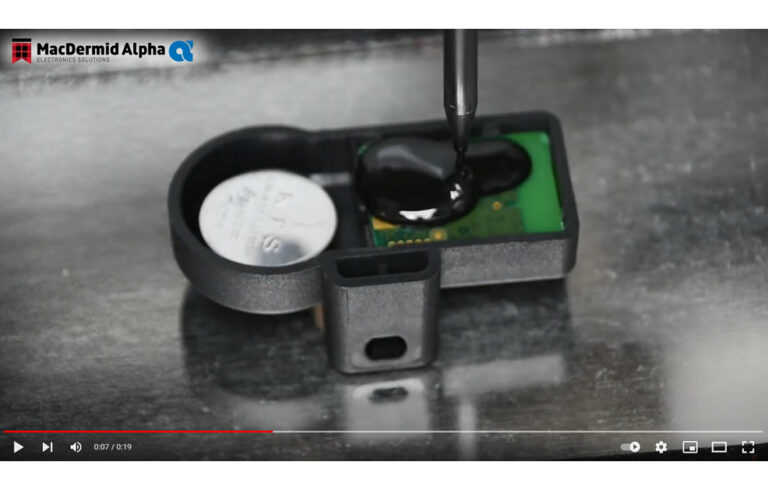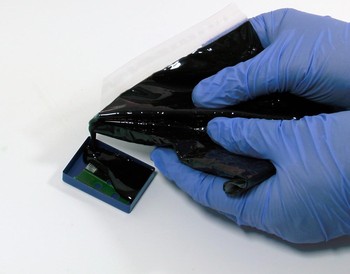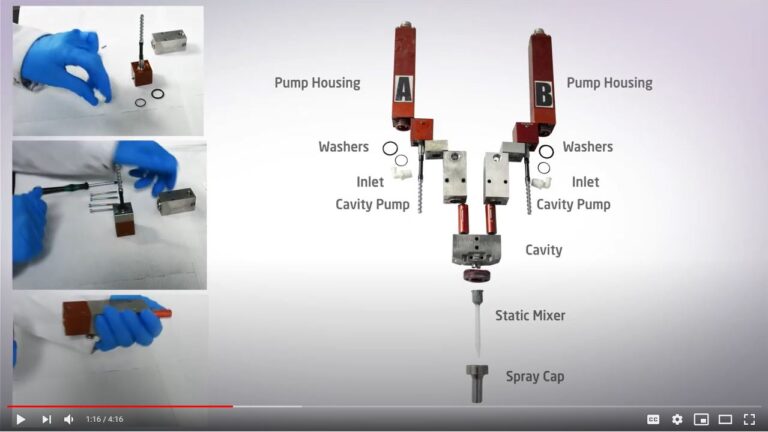I have been working with polymers and resins for more years than I care to remember and, modesty aside, have been involved in a number of significant developments ranging from structural composite resin and pre-preg systems for the aerospace and automotive industries, to my current activities with Electrolube and a strong team of chemists, formulating new resins for the protection of modern electrical and electronic assemblies.

Over this period, the electronics industry has witnessed an extraordinary rate of technological change – and we chemists have been hard at work keeping abreast of developments to ensure that we can supply the materials necessary to maximise the performance of high-performance electronic systems in physically and environmentally challenging conditions.
With this in mind, I thought this month’s blog readers might be interested in my personal angle on the progress my industry has made over these past 20 years and how resin chemistry has evolved to keep pace with the remarkable achievements of the electronics industry, such as device miniaturisation, ‘smart’ mobile telephony, electric vehicles and flexible display technology.
The thermal performance of resins has, therefore, come under greater scrutiny in recent years and their ability to conduct heat efficiently from electronic assemblies is one of several important considerations when choosing an appropriate resin system. The thermal conductivity of modern epoxy or polyurethane potting and encapsulation resins is improved by the introduction of fillers – either metallic or ceramic, depending on whether the resin is desired to be electrically conducting or insulating. The clever bit is getting the packing density right in order to achieve the improvement in thermal conductivity.
Unfilled resins have a low thermal conductivity – about 0.2W/m.K; here at Electrolube, we’ve managed to raise this to 1.54 W/m.K with our epoxy based ER2220 product. As well as compact, miniaturised electronic assemblies, high thermal conductivity potting resins are now increasingly being sought for the protection of LED luminaires – an industry that in just a few years has come from virtually nothing to one that is currently experiencing exponential growth. The LED industry has also benefitted from developments in silicone and polyurethane resin chemistries, which can provide the necessary optical clarity as well as desirable light diffusing effects.
Developments in the automotive industry – in particular, the growing availability of electric vehicles – have also seen demand for encapsulating resins with improved temperature stability, greater resistance to thermal shock and generally broader operating temperature ranges. Silicone resins, while they tend to be more expensive than their epoxy or polyurethane counterparts, are often the best choice for applications where high continuous operating temperatures (above 180°C) are expected, such as in the vicinity of electric motors and power electronics.
The volumes of resin used in an assembly are also more carefully calculated than in the past when the level of protection might have been improved by simply increasing the thickness of the coating or encapsulation. In the case of a modern smartphone, which puts extraordinary computing power in the palm of your hand, that simple expedient is no longer available to the design team and size and weight considerations now dictate the application of much smaller volumes of resin with no compromise in terms of its overall electrical performance.
In meeting these requirements, the electrical properties of modern resin systems have improved significantly in recent years. New, so-called ‘ultra-high performance’ polyurethane resins, for example, offer excellent electrical properties while also protecting devices from physical shock and vibration. These resins benefit from some of the latest developments in filler materials and particle dispersions that improve their dielectric strength, enabling thinner resin applications to deliver the desired electrical performance.
Environmental considerations and the health of production staff and end-users alike have had a huge impact on the material formulation of resins, which are now governed according to international regulations. These include the European Union’s ‘Registration, Evaluation, Authorisation and Restriction of Chemicals’ (REACH) regulation which has been in force since December 2006 and the ‘Restriction of Hazardous Substances’ (RoHS-1) Directive, which was adopted in February 2003 by the European Union – now superseded by RoHS-2, which was enforced in July 2011. Equivalent legislation outside of Europe includes the ‘Promotion of Clean Production’ law in China and ‘Safer Consumer Product’ regulation in California.
Clearly, these overarching regulations have had quite an impact on the way we chemists formulate our products and many of the raw materials that we used in the past, such as some specified heavy metals and solvents, are either banned or strictly controlled in terms of their concentrations. Since the introduction of these regulations, and like many of our colleagues in the industry, Electrolube has gone to great lengths to ensure all qualifying products are RoHS compliant (some being exempt under the rules) and that all comply with current REACH requirements.
The list of substances covered by the comprehensive REACH regulation is continually being updated and full implementation is not expected to be completed for quite a number of years yet. To make sure our company is fully up to date with developments, we have established a REACH task force within Electrolube that works with both our raw material suppliers and our customers to ensure full compliance with the regulation at every stage.
Over the last 20 years, various universities have conducted a lot of research into the way polymers age under a range of conditions, and how their various physical properties change over time. This has led to a better understanding of how resins behave in the longer term and has enabled us to specify appropriate resin systems and ensure that the products containing them will continue to function as intended over their design life and – increasing being demanded by our customers these days – well beyond.
So, what can we expect over the next 20 years? Prediction is proverbially a fool’s occupation but, as a company, we do have some insights into the future needs of our customers. Looking forward, we believe there will be more demand for very high performance resins that can tolerate higher continuous operating temperatures (180°C and greater), while being more resistant to thermal and physical shock and chemical attack. We are also looking into increasing the sustainability of our resins.
We have products now that deliver all of these properties, but there’s still plenty of research and development to do to ‘future-proof’ our resins portfolio, so we can continue to stay one step ahead and provide advanced solutions when our customers need new resin solutions the most, in keeping with the rapid changes of the market.










